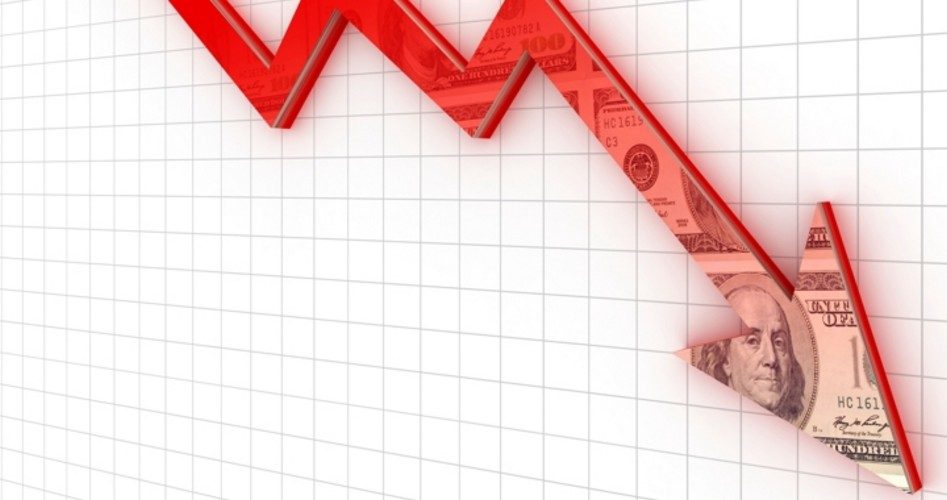
The Bureau of Labor Statistics (BLS) announced on Friday that wholesale prices dropped by 0.2 percent in June. Economists were expecting an increase of 0.4 percent.
Confounding those economists further, wholesale prices have dropped by nearly one full percentage point over the last year. Common sense says that when the supply of money and currency increases, price increases are sure to follow.
And the money supply has certainly been increasing. From the currency creator itself, the Federal Reserve, comes this: In the last 12 months, from May 2019 through April 2020, the M1 money supply (cash plus checking accounts) has increased by 33.5 percent. The M2 money supply (M1 plus savings accounts, money market funds, and CDs with less than one-year maturity) has increased by 23 percent.
A closer look reveals greater increases. In the three months from February through April, M1 (according to the Fed) is growing at an annual rate of 105 percent; M2, at a 65.3-percent annual rate.
And yet, at the wholesale level — soon to show up at the retail level — prices are steady or even declining.
This seems counterintuitive. Worthies such as Milton Friedman have said an increase in the supply of money always and inevitably leads to a devaluation of the currency. Said Friedman, “Inflation is always and everywhere a monetary phenomenon in the sense that it is and can be produced only by a more rapid increase in the quantity of money.”
Murray Rothbard was even more explicit:
If government manages to establish paper tickets or bank credit as money, as equivalent to gold grams or ounces, then the government, as dominant money-supplier, becomes free to create money costlessly and at will.
As a result, this “inflation” of the money supply destroys the value of the dollar or pound, drives up prices, cripples economic calculation, and hobbles and seriously damages the workings of the market economy.
And yet, the purchasing power of a dollar, at least at the wholesale level, and for food, is increasing.
This is a good thing. But how long can such good news last? Says Jeffrey Bartash, writing for MarketWatch, “The trend is likely to persist until the virus is contained … [price increases are] likely to remain low until the crisis is over.”
Two economists at Oxford Economics, Lydia Boussour and Gregory Daco, suggest that, for the time being at least, “Inflation [i.e., price increases] should be the least of our worries.”
What’s happening to all that stimulus money? Weren’t those $1,200 checks supposed to be spent? Turns out, no. Many, if not most, families used those checks to pay down debt or add to emergency-fund savings accounts. The savings rate for April hit an all-time high at 33 percent of wages. In May, the savings rate declined, slightly, to around 20 percent. The historical average is barely five percent.
But what happens when the COVID-19 threat is over? What happens when all that new currency reenters the market to purchase goods and services?
Investors such as Clem Chambers, who blogs at the private investors’ website ADVFN.com, suggests that “the more inflation [i.e. prices increase] an investor divines is coming, the more value they should shunt towards the pole of gold.” At 20 percent inflation, he thinks investors should own “a bit of stocks, a fat chunk of gold stocks [and] a lot of gold.”
He added: “While praying for miracles, we must prepare for the alternative.”
Image: Thinkstock
An Ivy League graduate and former investment advisor, Bob is a regular contributor to The New American, writing primarily on economics and politics. He can be reached at [email protected].



